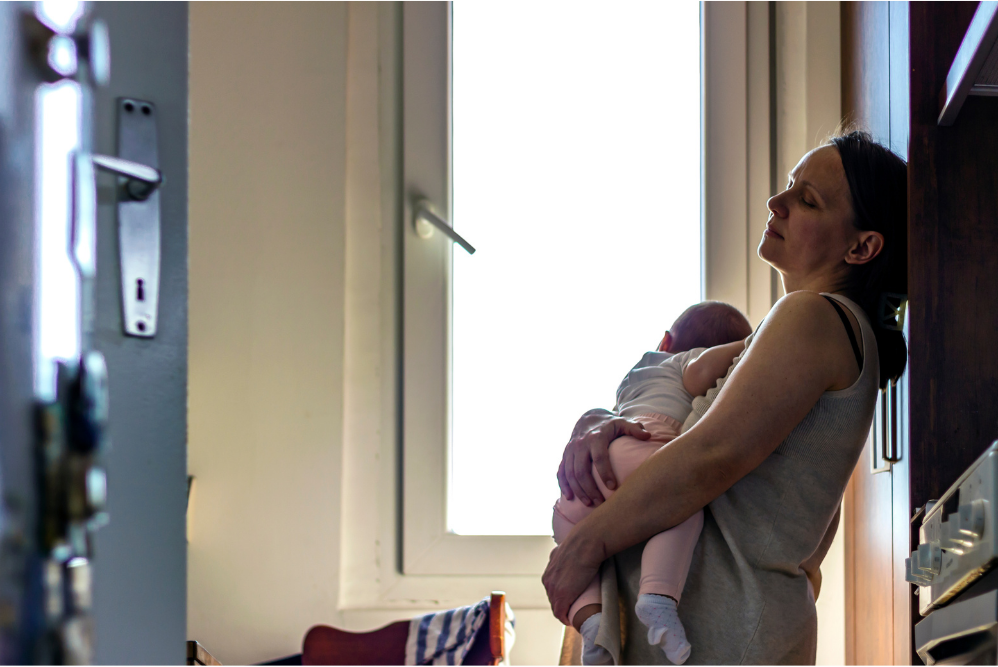Declan and Sara have three young kids, including a newborn. A lot of caring happens in their household, often when other things, such as housework, are also being done. The care work in this household is gendered, although less so than it was in many earlier households. For example, on many nights Declan sleeps on while Sara takes responsibility for attending to the children’s needs, if they are sick, wakeful, or crying, and she bears the added burden of tiredness the next day.
Key policies and government initiatives, including those on gender equality, are now acknowledging the importance of the unwaged care that occurs in households such as this one, which is great. These developments show that positive change can be achieved through strenuous and patient feminist action.
What we need now is to ‘bed down’ the focus on care and the care economy. But to do this we first need the government to adopt better measures of care, grounded in evidence from the activities of people’s everyday lives, such as those outlined in the above example.
Currently, policy relies on poor measures of care. For example, the Women’s Budget Statement, a key part of the Federal government’s gender equality reporting framework, relies on data from the Household, Income and Labour Dynamics in Australia (HILDA) Survey. HILDA is a household-based panel study that collects valuable information about economic and personal well-being, labour market dynamics and family life. But HILDA provides, at best, only a broad indication of the extent and gendered distribution of unwaged care work.
Once a year, HILDA asks people to recall how much time they spend in a typical week on child and other familial care. For the survey to generate reliable measures of care, Declan and Sara in the above vignette would need to accurately recall their uses of time in their busy and complex lives. But people’s recall ability is notoriously fraught, even when they’re not sleep deprived. Thus, HILDA only yields imprecise estimates of care.
The set activities included in HILDA’s definition of care is also quite narrow. Childcare is described as “playing with your children, helping them with personal care, teaching, coaching or actively supervising them, or getting them to childcare, school and other activities”. Many of the activities associated with nursing a newborn, for example, are missing here.

Activities associated with nursing a newborn are not included in HILDA. Picture: Nicholas Felix/Adobe Stock
A planned new ABS Time Use Survey (TUS) will improve the measurement of care. It will be less affected by recall problems because it will get people, over a 2-day period, to keep a diary that records all their main activities (including providing care).
However, a big problem with the planned TUS is that it will not collect accurate information on ‘secondary’ care, which is the care provided while people are ‘mainly’ doing other things, such as housework.
People will be asked to record if any child or other person was in their care during each main activity. However, the times when a child or other person was present will not be noted. Thus, we won’t know if, for example, children were in Declan’s and Sara’s care for all of the time they were doing housework on a particular day, or for only the first few minutes.
A further problem with the planned TUS is that it will fail to capture key details on the intra-household division of secondary care. In the above example, for instance, both Declan and Sara are likely to report that there was a child in their care during a family outing, when their main activity was leisure. The survey would thus record both partners providing the same amount of secondary care even if only one of them takes responsibility for monitoring the children’s interactions and safety, stepping in where necessary. This further limits the accuracy and usefulness of the data on care likely to be generated by the new TUS.
Finally, the details on the co-presence of others won’t be captured by the new TUS. Thus, it won’t generate measures that distinguish, for example, between situations where Declan is solely responsible for the care of his kids and where he engages with childcare when Sara is present. This is a limitation because a key signifier of changing gender responsibilities is whether men are engaging in care on their own or together with their partner.
Australia can and should do better in measuring care. We used to have a world leading TUS and we can achieve this again. New technologies exist to collect time use data on both primary and secondary care, on the time when care occurs, and on the presence of other people when care is being provided. What we need now is a commitment to collecting the data needed for a truly evidence-based policy on care.
- Please note: Picture at top is a stock photo







